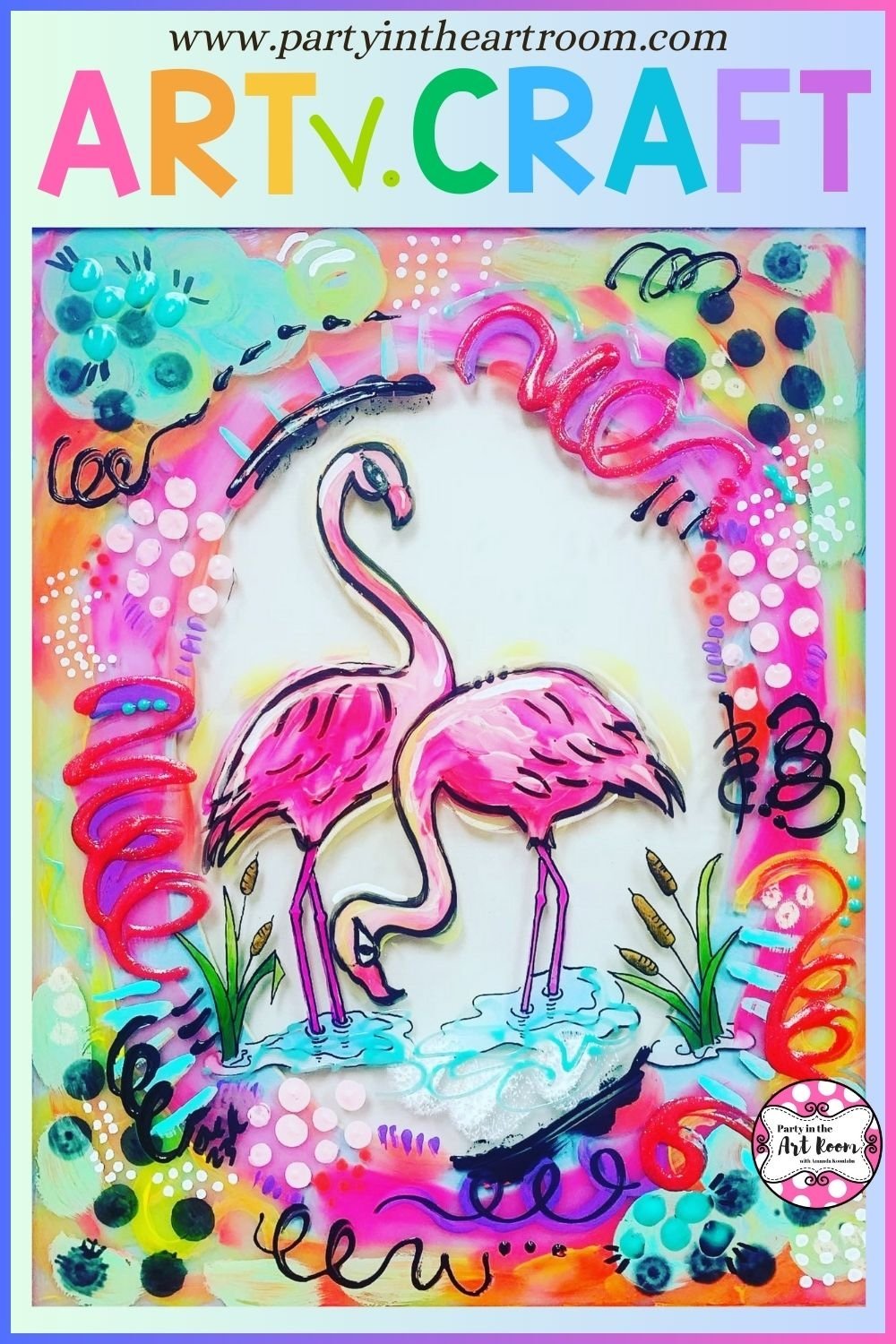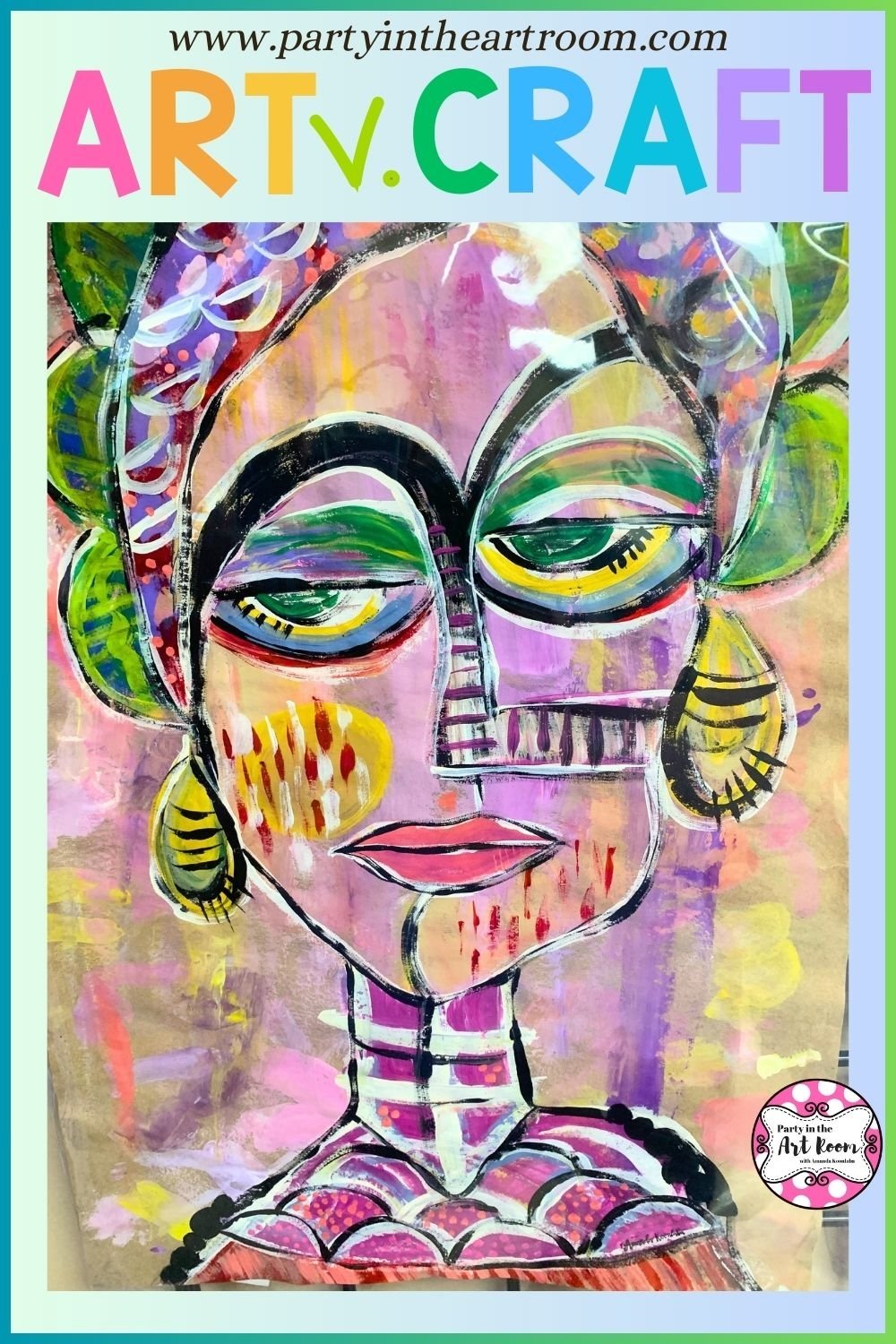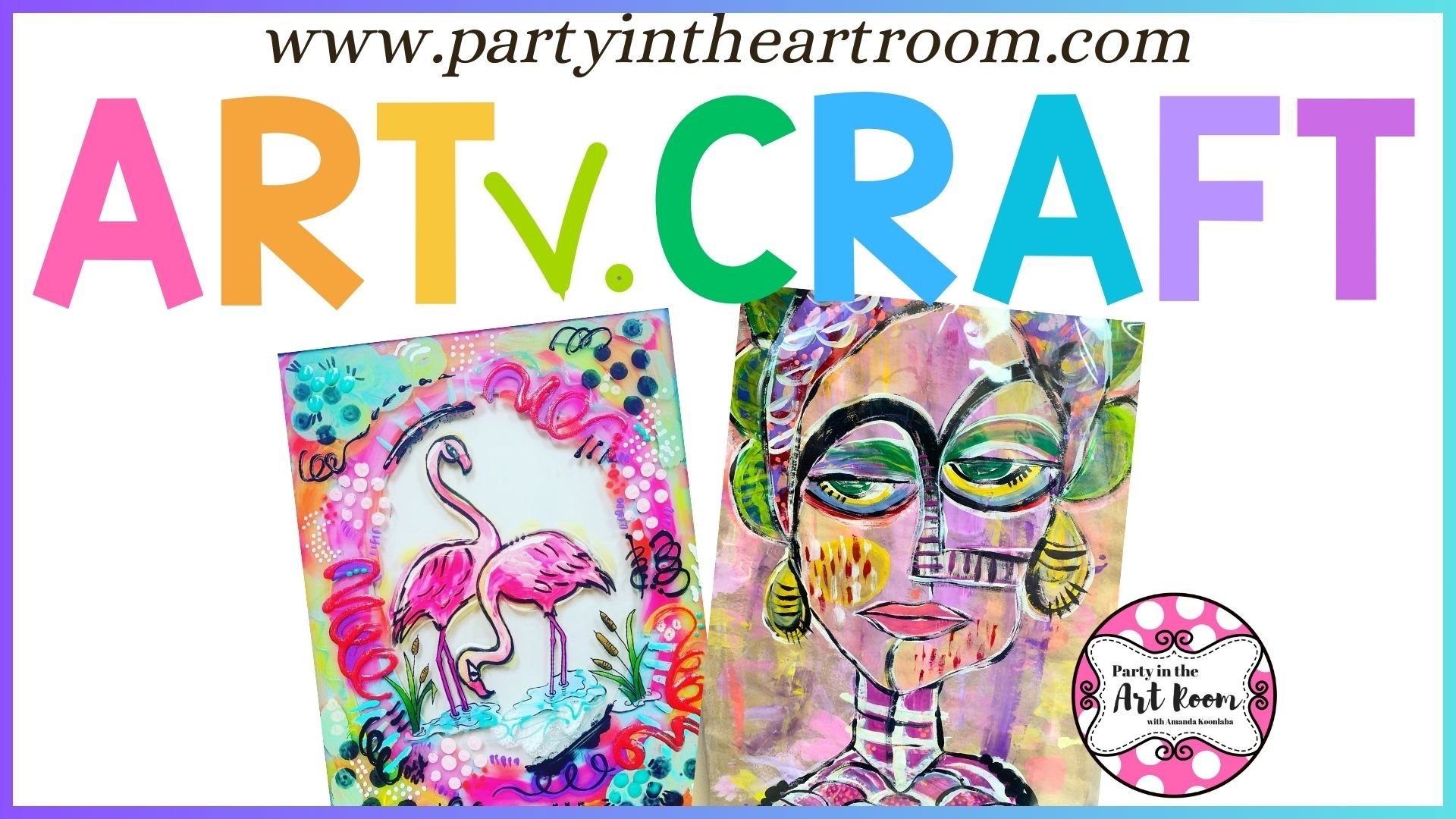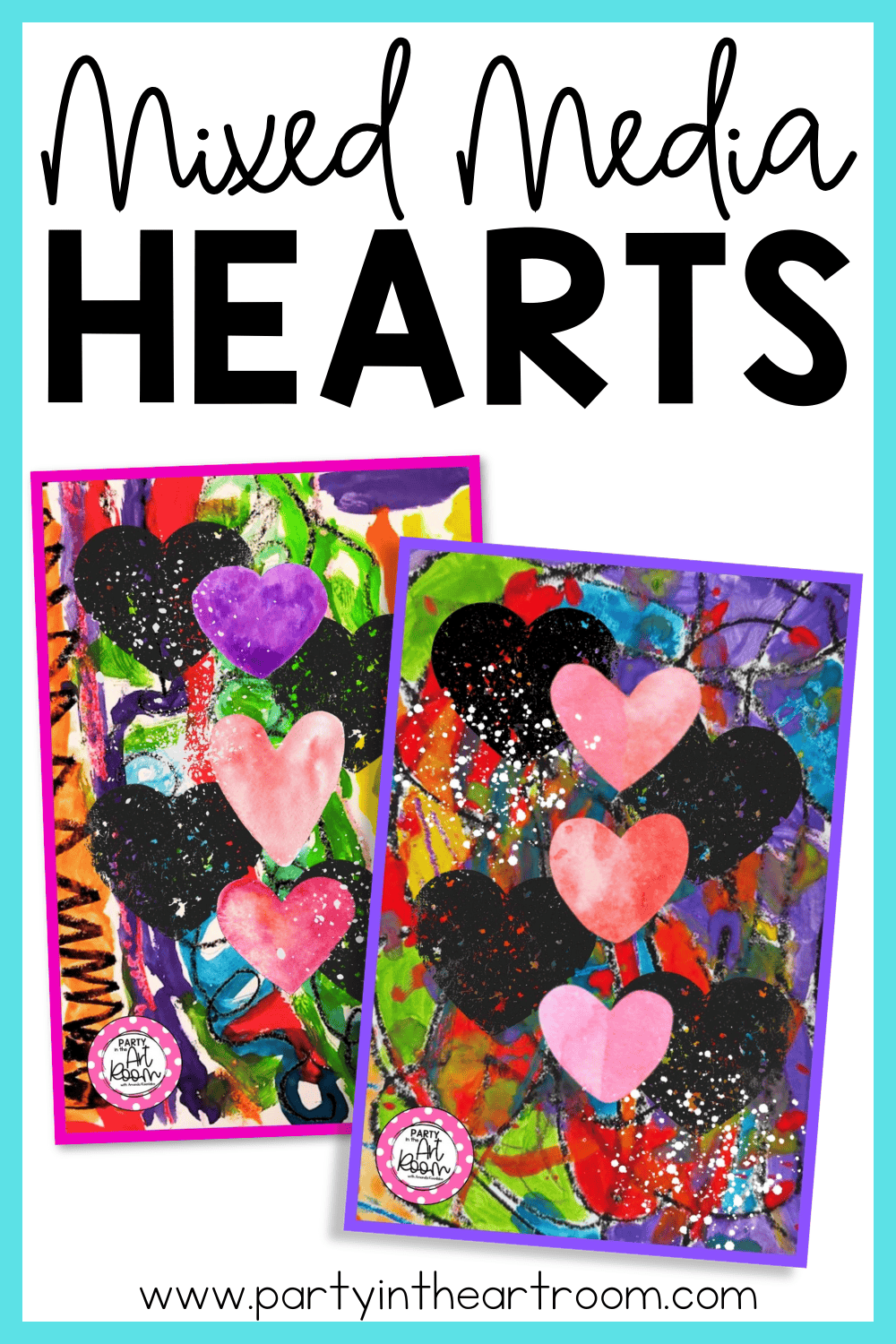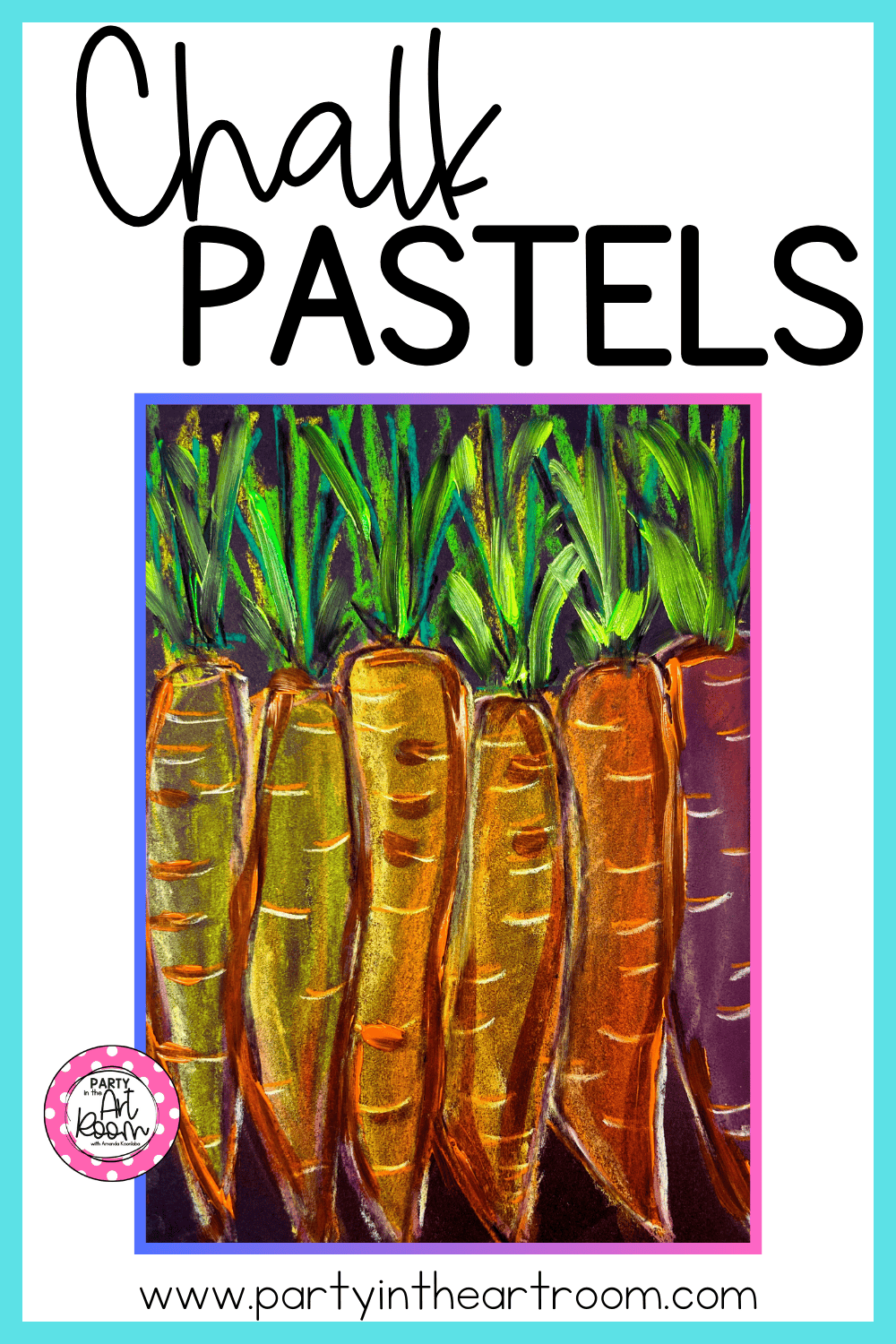Art Vs. Craft-Is There Really Any Useful Difference?
When discussing the world of handmade goods and expressions it is common to distinguish between something being an art or a craft. While the difference between arts and crafts may be subtle by definition, the history of the words is loaded with hidden meanings that denote class, academic value, and cost. Understanding the stereotypical differences between arts and crafts can help educators and art enthusiasts avoid undervaluing or misclassifying handmade goods.
What is art? What is craft? The historical context can help us better understand the stereotypes these words perpetuate. This painting of two flamingos is painted with hot pink acrylic and tempera paint.
You might be interested in this Flossy Flamingo Dice Roll Game for Art Class.
Artwork by Amanda Koonlaba.
What is Art?
The answer to this age-old question is always changing. However, art is defined in the Oxford Dictionary, as "the expression or application of human creative skill and imagination, typically in a visual form such as painting or sculpture, producing works to be appreciated primarily for their beauty or emotional power.”
Art is often thought of as a visual or physical depiction of a specific human’s experience or existence. Art is usually considered a grand triumph of humanity. It serves as a tool to help understand human emotion and experience.
Art is often created with expensive paints, pigments, or clay. Art usually does not serve a tangible purpose aside from being appreciated and pondered. Art is given a high social and monetary value because of the cultural significance that is commonly placed upon it.
What is A Craft?
Crafting is often associated with a more utilitarian purpose than art. Crafting covers handmade items that have a more applicable use than simple appreciation. Traditionally, crafts are made from ceramics, glass, metal, fiber, or wood.
While crafting is less likely to be traditionally seen as a form of highbrow human expression, it has always served as a method of creation from early human civilization to anti-industrial countercultures, to modern material-based artists.
Crafts are often stereotyped as a less legitimate form of creation because of their modest roots. While people of all classes have always made aesthetically pleasing yet useful items by hand, it has often been attributed to stereotypes of the lower class.
What are the Historical Implications?
A piece of physical art is often stereotyped as an art or a craft based on a few defining characteristics mostly surrounding a piece’s perceived value. While a piece of ceramic art or a woven quilt may use more costly materials and take more time, it is the piece’s perceived value that makes it valuable.
Over the past few centuries, the words art and craft have been used to separate work based on its inherent perceived value. The world of art is often categorized through a primarily white Anglo-Saxon lens. It becomes easy to see that mediums like painting, drawing, and stone-based sculpture, which are the primary methods of European artists, are deemed art. At the same time, mediums like ceramic, fibers, wood, and beads, which are primary methods of more marginalized communities, are labeled as crafts.
The debate about art vs. craft is centuries old. Often, the distinguishing factor is perceived value. So, how can teachers promote creativity without Perpetuating stereotypes?
You might be interested in this Paul Klee Abstract Portrait Dice Roll Game for Art Class.
Artwork by Amanda Koonlaba.
How Can Teachers Promote Creativity without Perpetuating Stereotypes
As art educators we must make are students aware that creativity in any medium has value. Whether studying the great painters of the Renaissance or the immaculate weaving practices of the Navajo people, all creation is a valuable expression of human existence and something to behold. Here are a few ways that art educators can promote creativity while recognizing stereotypes.
Focus on the Process and the Creative Thinking
When studying a specific medium, always focus on the process needed to create with those tools in that style. When we take a step back and focus on the creative process, it becomes easy to see that every artistic medium has value. Whether students are examining a specific art style or trying their hand at a new medium, always highlight the creativity needed to make something beautiful.
Highlight the Cultural Significance when Studying Art
History and art education go hand in hand. When studying a new form or style, always give recognition and admiration for the cultures that established the foundation. When you learn the cultural significance behind art, it becomes much easier to appreciate the process and reason for creation.
Lean into diverse artists when sharing works of art.
As art educators, we must highlight the voices of artists who are often left unheard. Creativity is all about sharing human experience and what better way to do that than to share the art of marginalized artists?
Conclusion
In conclusion, the distinction between art and craft is deeply rooted in historical, cultural, and social contexts, often perpetuating stereotypes and undervaluing certain forms of creativity. Is there really any useful difference? The answer lies in understanding that both art and craft are valuable forms of human expression, each contributing uniquely to our cultural and personal narratives. As art educators, it is our responsibility to challenge these biases and recognize the inherent value in all creative expressions. By focusing on the creative process, highlighting cultural significance, and amplifying diverse voices, we can foster an inclusive environment that celebrates the richness of human expression in every medium. Ultimately, whether labeled as art or craft, every handmade creation holds the power to inspire, educate, and connect us to the diverse experiences of humanity.
Process and Creative Thinking: Game for Art Class
Here’s a fun art class game that focuses on the creative process. Use this lesson to spark class discussions about art versus craft!
You might also like:
I’m Amanda, and I align standards and integrate content to help teachers meet the needs of the Whole Child in art class! I have yet to find a standard that I couldn’t teach through art, and I want to share it all with you.
Not sure where to start with bringing art and content together? This freebie guide is packed with 25 ideas to align your art lessons with math and ELA standards. Your students will be crafting art and practicing algebraic thinking. Win-win!
I want all students to feel successful in the art room, so I created a standards-based Daffodil Collage lesson to do just that! The lesson includes an artist study, student reflection, and more, so push your artists to their full potential.
Follow along on my Instagram page for more tips on teaching the Whole Child in the art room!
Connecting art and content together doesn’t have to be mind-boggling. I’ve made it simple with 25 math and ELA art lesson starters - for free! Plus, I included 15 worksheets for students to reflect on their art-making journey.
